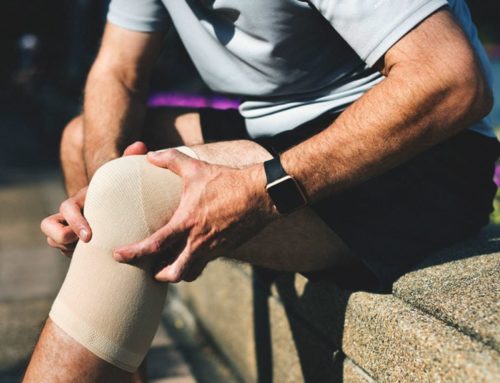Thanks to Sidney Crosby’s well documented history of concussions, Will Smith’s critically acclaimed film, aptly titled, “Concussion” & just about any other movie or TV show about high school sports, Pop Culture does a commendable job calling attention to the risks of concussions in sport.
What Pop Culture failed to highlight in each of these circumstances is the proper rehab process from a concussion. Because of this, I see many parents, coaches, and volunteer trainers left using the same concussion recovery guidelines that were used 10, 20, EVEN 30 YEARS AGO!!! Some of these archaic practices have been proven ineffective, others completely debunked. And some have even been shown to be harmful.
I’d like to shed light on 3 common concussion rehab practices that I passionately feel should be either tossed aside or at least given a scientific-based upgrade:
#1: The Dark Room Approach
Traditionally, injured individuals were encouraged to rest in a dark room with LITTLE to NO STIMULATION until complete symptom resolution. This concept was known as “COMPLETE REST”.
The intention of this approach was to minimize or alleviate concussion symptoms by reducing the amount the brain needed to work “so it can focus on healing”. Seems logical, right? “When something is hurt, you let it rest and the healing will take care of itself”.
But thanks to modern science, there is growing evidence to suggest that COMPLETE REST CAN DELAY SYMPTOM RECOVERY AND RETURN TO BOTH EVERYDAY ACTIVITIES AND SPORTS. Additionally, a prolonged Dark Ages – …oops…I mean Dark Room – Approach has been shown to magnify the secondary effects of post-concussion symptoms such as Anxiety & Depression.
So what do we do now? Well according to the 2020 Clinical Practice Guidelines for the Evaluation and Treatment After Concussion / Mild Traumatic Brain Injury No More than 24-48 hours of Complete Rest is recommended. After which there is a focus on Relative Rest where normal activities of daily living are gradually integrated into your daily routine as tolerated.
MYTH: BUSTED!!!
#2: “It’s Been a Few Days & I Feel Better Therefore I Must be Recovered From My Concussion”
Another common question I get asked is “When do you think I can go back to sports?” Unlike a sprained ankle or pulled hamstring we just don’t know when the exact date someone should be recovered from their concussion symptoms.
What we do know is that when someone suffers a concussion, we see a REDUCTION IN BLOOD FLOW to the brain and a DISTURBANCE TO THE BRAIN’S EQUILIBRIUM. Through research, we now know that it takes 7-10 days for these imbalances to correct themselves and for the brain to return to a relative state of metabolic normalcy.
So even though you feel fine, if you are within the 7-10 day window this disturbance to your brain is still very much real and present. What makes matters even more scary is if you receive a subsequent blow to your head inside this 7-10 day window you put yourself at risk for further injury or permanent damage.
Please take the necessary time to “relatively rest” with symptom monitoring and follow-up with a medical practitioner who specializes in concussions to ensure you are recovering smoothly and fit enough to return to sport both safely and effectively.
MYTH: BUSTED!!!
#3: Injury to Full Play [The “Protocol” for a (UN)Successful Return to Sport]
Back in my high school days even after you took all the right steps in notifying your coach that you didn’t feel right after getting a hit to the head, went through relative rest & took the necessary 7-10 days to ensure you properly recovered from the physiological effects of the concussion, we were asked “You feel good enough to play tonight?”
99.99% of the time my teammates or I said YES. And 99.99% of the time after the game we discussed amongst ourselves that we “just didn’t feel right”, “felt slow”, “the lights were too bright”…by our standards we would not call what we had a “SUCCESSFUL RETURN TO SPORT”. Something would seem to be off for several weeks…until one day we felt like ourselves again.
I see this practice far too commonly in amateur sport from youth to high school to elite club levels. Kids go through weeks, months or seasons where the demands of sport overwhelm their recovering brains and they fall short of where they (and their coaches) expect their level of performance to be. This can lead down a dark path of subsequent anxiety, isolation & even a potential identity crisis.
Just because someone feels asymptomatic on a day-to-day basis DOES NOT MEAN they can handle the multi-system demands of sport. It’s up to us as parents, coaches and healthcare professionals to determine if our kids and athletes can successfully return to the demands of their designated sport.
According to the 2020 Clinical Practice Guidelines, to ensure a successful return to sport athletes should be subjected to a 6 STAGE RETURN TO SPORT PROTOCOL, with each stage passed if no symptoms arise immediately or within a 24 hour window.
Here is a copy of the 6 Stage Return to Sport Protocol:

MYTH: BUSTED!!!
Hopefully this clears up some concussion myths and helps you make the most informed decision regarding your child or athlete’s care.
Written by: Andrew Howie, Physiotherapist






